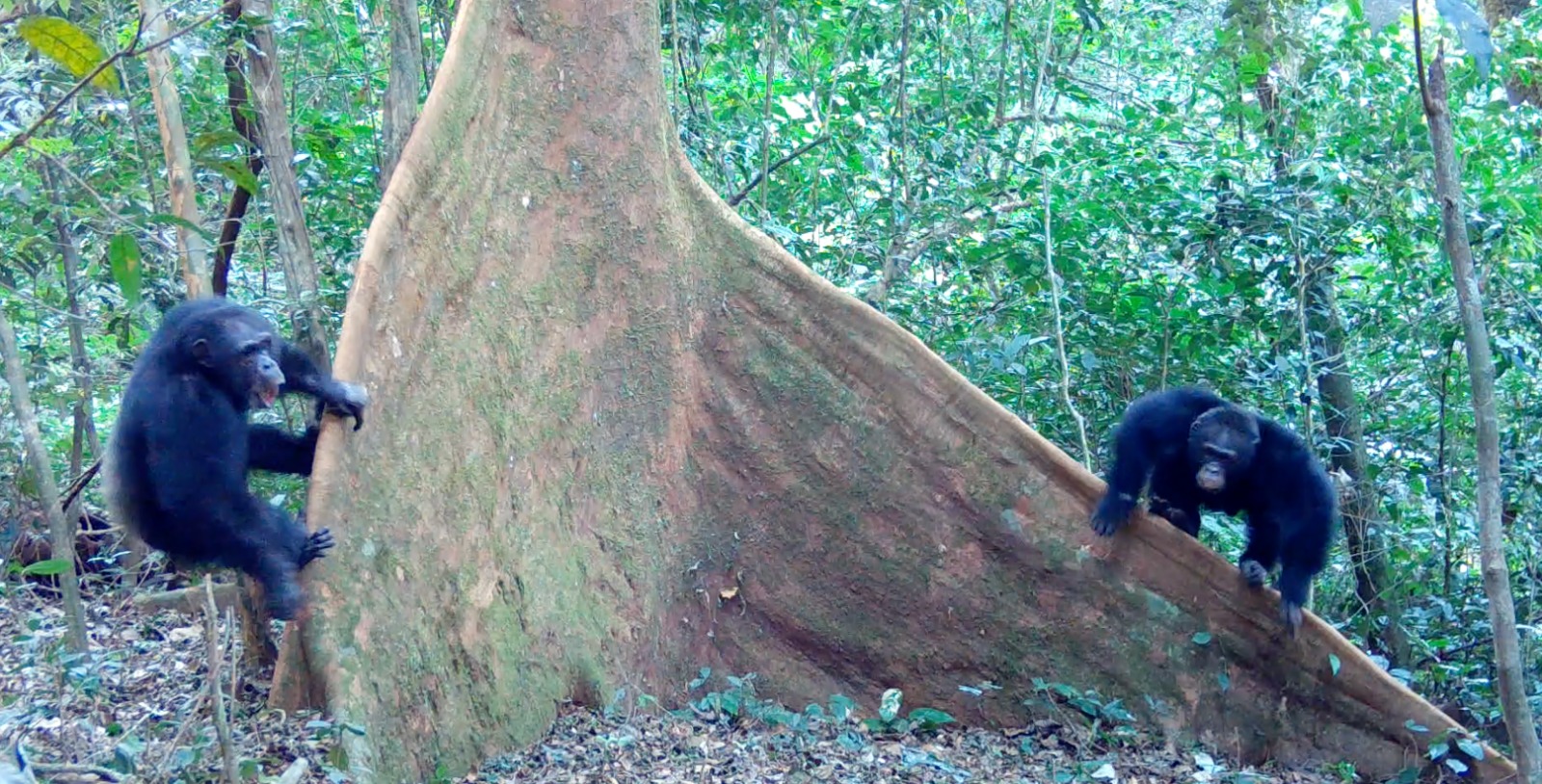Chimpanzees Drumming Offers Clues to the Evolutionary Roots of Rhythm

A new study co-authored by IEA’s Prof. Kathelijne Koops (Ape Behaviour & Ecology Group) and Dr. Adrian Soldati (Comparative Communication & Cognition Group) revealed that wild chimpanzees use drumming in rhythmically structured ways, showing features similar to human music (e.g., isochrony and non-random timing). In addition, the researchers found stable subspecies-level regional differences between West and East African chimpanzees in both the drumming structure and its integration within pant-hoots (chimpanzees’ characteristic long-distance call), despite substantial ecological variation.
This study represents a major collaborative effort, with scientists from several universities working at different field sites who collected chimpanzee drumming data from 11 communities across six populations over a total period of 24 years. One of the West African populations included are the IEA’s very own Nimba Mountains chimpanzees in Guinea! (see video clip).
These findings suggest that our ability to create percussive, music-like, and stable rhythmic patterns might have been present before humans and chimpanzees diverged, and offer a promising new system to investigate the evolution of musicality.
Here is the link to the study: https://www.cell.com/current-biology/fulltext/S0960-9822(25)00448-8
In the media: